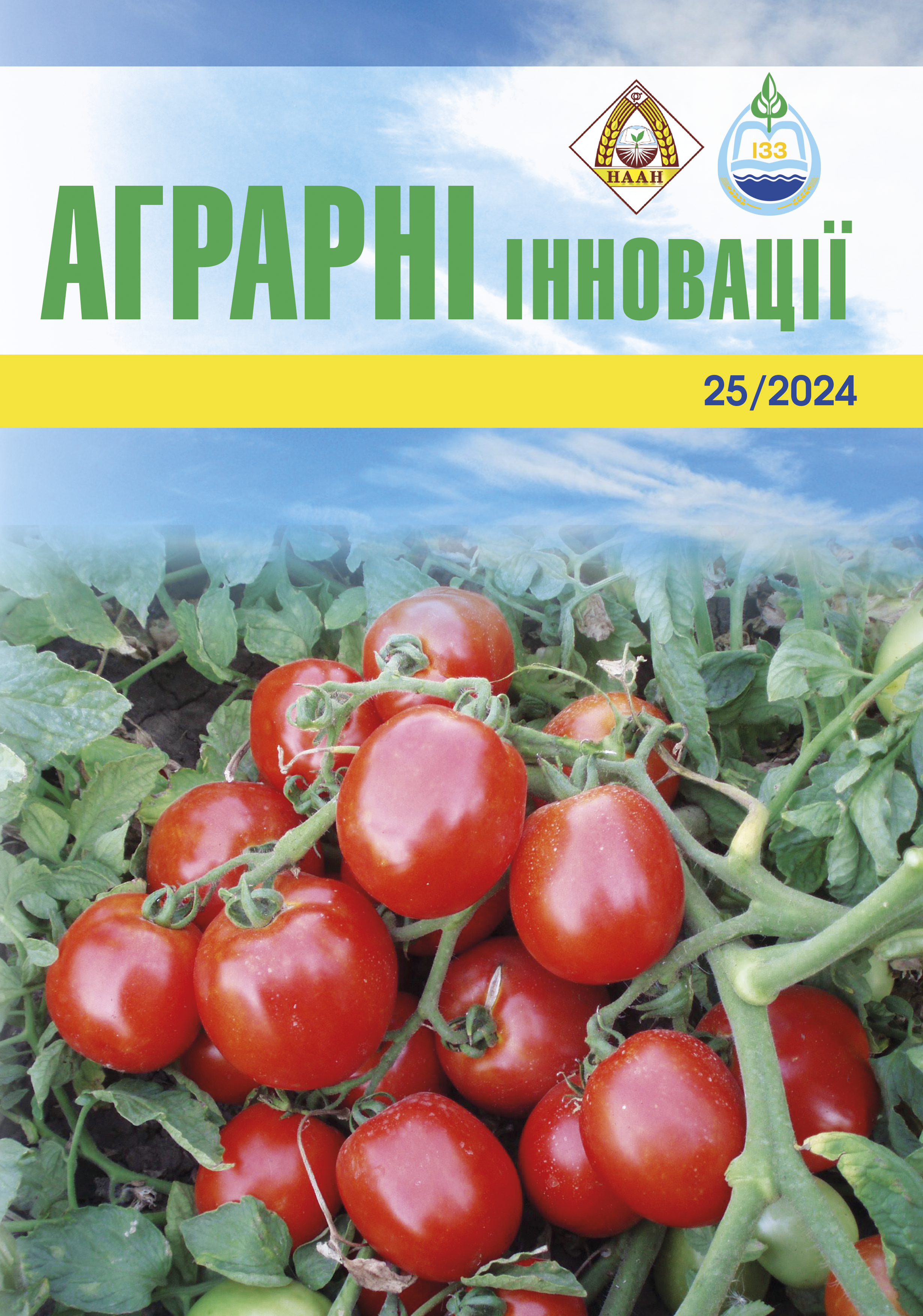The influence of methods of main tillage on the formation of winter wheat plant productivity and productivity
Abstract
Purpose. To establish the influence of methods of main tillage for winter wheat to obtain high levels of productivity in the conditions of the North-Eastern Forest Steppe and summarize the results of the previous stages of research. To investigate the dynamics of winter wheat productivity under the influence of the main tillage methods, to establish the most reasonable options for the main tillage in combination with the meteorological indicators of the given growing zone. Methods. Research methods: field, laboratory, analytical, statistical. The establishment of experiments and their location were carried out in accordance with the methodological recommendations «Methodical guidelines for conducting field research and studying the technology of growing grain crops». Statistical processing of the results of the experiments was carried out using the dispersion method, while the Excel application package was used. Results. On average, over the years of research, tilling the soil with a heavy cultivator to a depth of 10-12 cm with continuous cutting of the root system of weeds contributed to the reduction of their total number. Thus, after the restoration of spring vegetation, with such soil cultivation, 54.6 plants grew on each square meter. with a total raw weight of 11.5 g, and a dry weight of 2.84 g. At the same time, the average weight of 1 weed plant was 0.21 and 0.05 g, respectively. The main cultivation of the soil with the same cultivator and diskless tillage led to greater weediness of wheat coenoses by 10.6-16.2 pcs./m2 with a significantly greater vegetative mass. During plant care, the vast majority of dicotyledonous weeds were killed, but a new wave of weeds appeared before harvest, mostly grasses and some dicotyledons. Their number was significantly higher with surface disc cultivation by 6-8 cm, namely 94.2 pcs./m2, while in the control – tillage with a heavy cultivator by 10-12 cm, their number was 54.8 pcs./m2. At the same time, their vegetative mass was 2-3 times greater: raw – 239.2 g, and dry – 30.6 g/m2. Shelf-less methods of basic soil cultivation with both a heavy cultivator and a disk harrow to a shallower depth, namely 6-8 cm on average over 3 years, reduced grain yield slightly, but significantly: by 0.26-0.27 t/ha at LSD05 – 0.25 t/ha compared to cultivation with a heavy cultivator to a depth of 10-12 cm. The yield of winter wheat, depending on the methods of main soil cultivation, according to average indicators (2021-2023), was 4.82-5.01 t/ha. The most favorable weather conditions were the growing season of2022, which significantly differed in yield (5.39-5.56 t/ha) on the control variant. Conclusions. In the conditions of the zone of unstable moisture, especially in the autumn period, during the main cultivation of the soil, it is effective to use shelfless disc tillage to a depth of 10-12 cm. Under such conditions, the indicators of the crop structure and grain yield of winter wheat were the highest. The number of weeds significantly prevailed with diskless tillage to a depth of 6-8 cm.
References
Economic Study of Wheat Winter Varieties by Different Geographical Origin. Ecological Engineering & Environmental Technology. 24(1). P. 12–21. https://doi.
org/10.12912/27197050/154912.
2. Собко М.Г. Продуктивність сортів пшениці озимої залежно від строків сівби в умовах північної частини лівобережного Лісостепу України. Вісник Полтавської
державної аграрної академії. 2014. Вип. 1. С. 6–9.
3. Марковська О.Є., Гречишкіна Т.А., Лавренко Н.М. Вплив елементів технології вирощування на урожайність та якість зерна сортів пшениці озимої в умо-
вах Південного Степу України. Colloquium Journal. Agricultural Sciences. 2020. 19(71). https://doi.org/
10.24411/2520-6990-2020-12053.
4. Присяжнюк Л.М., Хоменко Т.М., Ляшенко С.О., Мельник С.І. Показники продуктивності нових сортів пшениці м’якої озимої (Triticum aestivum L.) залежно
від факторів вирощування. Plant Varieties Studying and protection. 2022. Вип. 18(4). С. 273–282. https:// doi.org/10.21498/2518-1017.18.4.2022.273989
5. Tsyuk O., Tkachenko M., Butenko A. Changes in the nitrogen compound transformation processes of typical
chernozem depending on the tillage systems and fertilizers. Agraarteadus. 2022. 33(1). 192–198. https://doi.org/10.15159/jas.22.23.
6. Кирнасівська Н.В., Колеснікова О.А. Агрокліматична оцінка вологозабезпеченості періоду вегетації озимої пшениці у Вінницькій області. Вісник Полтавської
державної академії. 2021. Вип. 4(103). С. 71–79 https://doi.org/10.31210/visnyk2021.04.08
7. Karpenko O., Butenko Y., Rozhko V., Sykalo О.,
Chernega T., Kustovska A., Onychko V., Tymchuk D.S., Filon V., Novikova A. Influence of Agricultural Systems
on Microbiological Transformation of Organic Matter in Wheat Winter Crops on Typical Black Soils. Journal of
Ecological Engineering. 2022. Vol. 23(9). P. 181–186.DOI: https://doi.org/10.12911/22998993/151885
8. Методика польових досліджень з обробітку ґрунту. ННЦ «Інститут землеробства НААН» 2020. 84 с.
9. Царенко О.М., Злобін Ю.А., Скляр В.Г., Панченко С.М. Комп’ютерні методи в агрономії та с.-г. біології. Суми. Університетська книга. 2000. 203 с.






